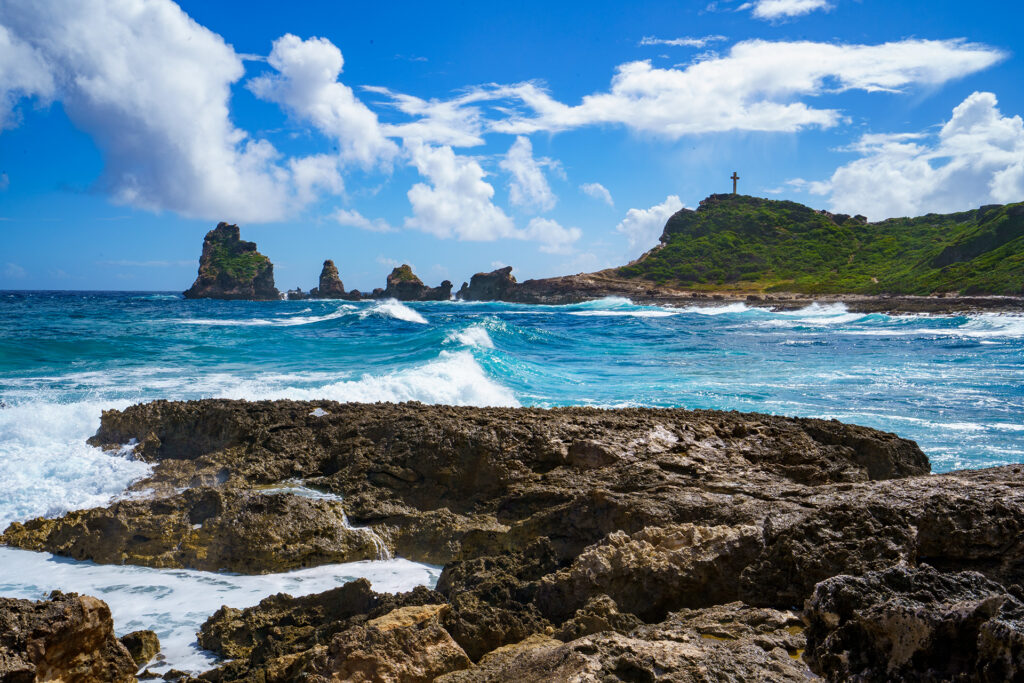
POINTE DES CHATEAUX AND ITS SALT FLATS
Description
141.10 ha peninsula located to the south-east of Grande-Terre, the Pointe des Châteaux is made up of calcareous* soils covered with xerophytic* plant formations, typical of dry coastal areas. In that area, different environments come together: limestone cliffs, which dominate 43 m above two rocky islets, six lagoons* and several beaches that separate these groups. Among the six lagoons, the Grande Saline covers approximately 15 ha, making it the most impressive (the others often cover less than 1 ha).
The busiest site in Guadeloupe, with 500,000 visitors a year, welcomes sunrise lovers and hikers. At the top of the cross, you can enjoy a 360° view of the Pointe des Châteaux peninsula, but also of La Désirade, Marie Galante and Petite Terre. On a clear day, you can even see Basse Terre and the Saintes archipelago.
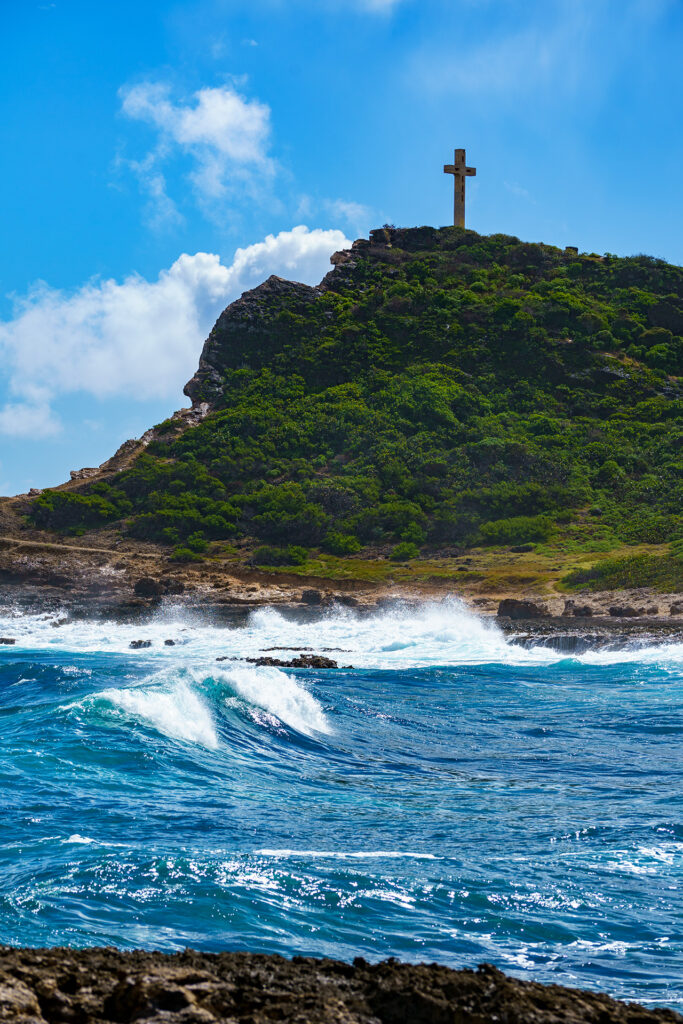
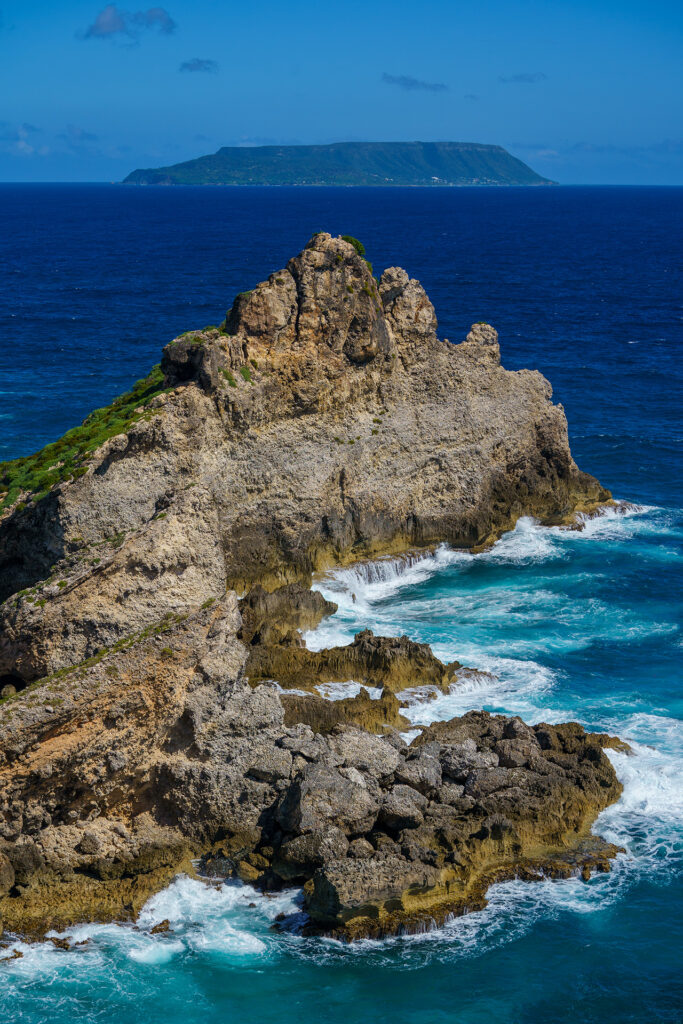
Biodiversity
Among its vegetation are hidden several sensitive species that are heritage of the area, some of which are protected, such as the green wood (Symplocos guadeloupensis), the water mampoo (Pisonia subcordata) and the shoreline purslane (Sesuvium portulacastrum). On the edge of the salt flat you can find a black mangrove forest (Avicennia germinans); along the beach you can see stinging cherry (Malpighia martinicensis), seagrapes (Coccoloba uvifera) and grey nicker (Caesalpinia bonduc); and St. Thomas prickly-ash (Zanthoxylum punctatum) on the cliffs.
The fauna is varied. On the islets of La Roche and L’Eperon, there are 1,500 to 2,000 pairs of sooty terns (Onychoprion fuscatus) and this is the most important site in Guadeloupe for their nesting; other species of terns also inhabit here. The cliffs are home to the red-billed tropicbird (Phaethon aethereus). Least terns (Sternula antillarum) and 5 endemic species of the Lesser Antilles, the green-throated carib (Eulampis holosericeus) and the antillean crested hummingbird (Orthorhyncus cristatus), the scaly-breasted thrasher (Allenia fusca), the lesser antillean bullfinch (Loxigilla noctis), and the lesser antillean saltator (Saltator albicollis); nest in the thickets and shrub formations.
Certain terrestrial reptiles with a restricted appearance are also of interest to the site, in particular the fantastic least gecko, also known as fantastic sphaero (Sphaerodactylus fantasticus).
Ecotourism potential
The site offers a 2 km walk including the ascent to the Morne Pavillon viewpoint where the cross is located. Well equipped and giving access to an exceptional panorama; it’s a joy to walk along the cliffs, up the road to Pointe la Chaise and continue across the rocky plain to Anse Degrat before merging onto the road for a well-deserved sherbet or shave ice. This short and generally hot excursion, often ends with a swim in the calm waters of Anse Tarare beach.
Video link, aerial view:
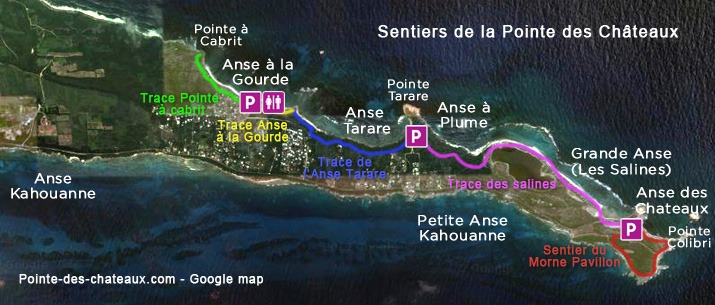

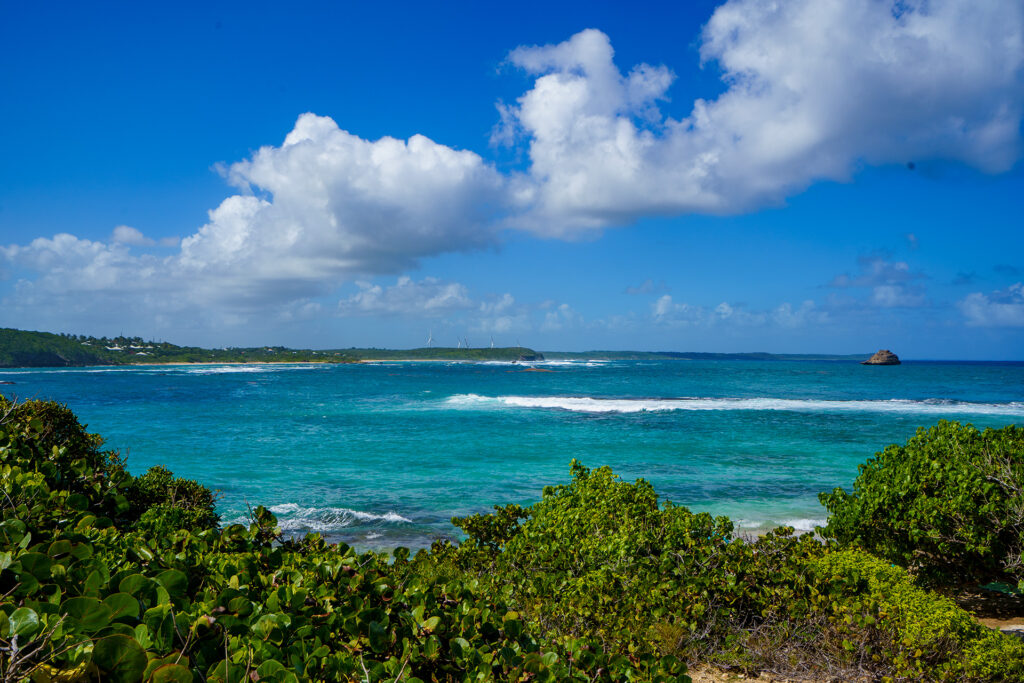
picture n°1 : Full trail map
picture n°2 : Morne Pavillon trail map (towards the cross) explained
Source: pointe-des-chateaux.com
Informations
-
-
Location
Guadeloupe (Saint-François)
